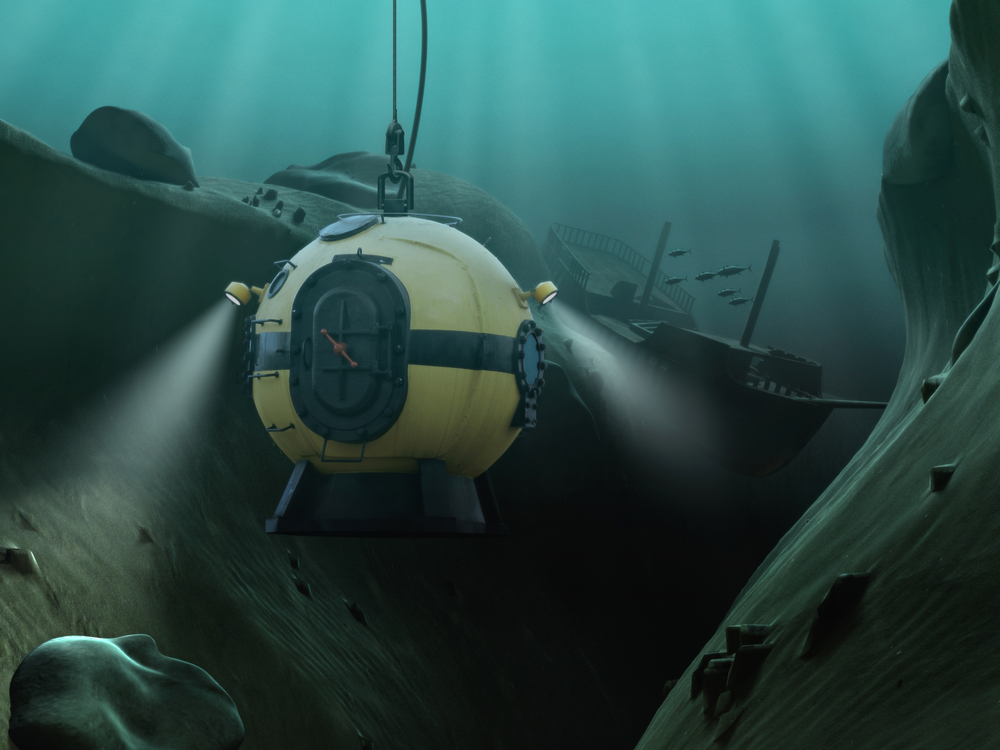While space and the wider universe contain untold mysteries, there are many still to be solved here on Earth. One of the most interesting and unknown places on this planet are the deep ocean trenches that lie in the middle of many ocean floors. These trenches are so deep that they have only recently been discovered. What surprises they hold is an incredibly exciting question and something scientists are desperate to find out.
Trenches are long thin cavities on the ocean floor. They are so incredibly deep that in some cases if you put Mount Everest at the bottom of one of the trenches its peak would still be two kilometers below sea level. The Mariana Trench is the deepest part of the ocean and the deepest location on Earth. It is 11,034 meters deep (Mount Everest is 8,848m tall). The trench is 2,500 km long and 70 km wide. That is absolutely massive.
Trenches are formed by tectonic plate movement and volcanic activity. On the top layer of the Earth, there are plates which land and the sea reside on. There are seven major tectonic plates and eight minor tectonic plates. The largest plates are the Antarctic, Eurasian, and North American plates. On average these plates are about 125km thick. As the Earth is a sphere these plates are the fractures of large curved sections that are in constant movement. At the plate boundaries, they are either pulling apart from each other are pushing together.
When plates pull apart lava erupts from the gap and volcanoes form. When plates push together one usually goes over the other and can cause earthquakes and volcanoes to occur as well. When plates push past sideways past each other earthquakes usually occur. Deep trenches are formed when tectonic plates are being subducted (one under another) and earthquakes are usually common as well.
For years we didn’t even know these trenches existed as we didn’t have the capability to go that far below sea level. Early explorers did drop diving bells to the ocean floor but none were long enough to enter the ocean trenches. In more recent times we have had the technology to map the ocean floor and realize their existence and in very recent times we have had the ability to start exploring these trenches.
James Cameron is famous for making the movie Titanic but he is far more interested in what goes on below the sea than on the surface. He is an avid explorer and in 2012 he completed the first solo trip to the bottom of the Mariana Trench on his vessel called the Deepsea Challenger. While this environment has extremely cold temperatures and high water pressure, life does exist and in fact, it flourishes. There are one-celled organisms, tubeworms, and other strange plants and animals that the world has never seen before.
The exploration of these deep trenches is not just for the exploits of rich directors, it is important scientific work. It is important to know what life exists in these trenches to better understand the extent of the diversity we have on Earth. Animals and plants have provided so much to people in terms of medicine, nutrition, and more that if there are undiscovered plants or animals they could mean the cure to cancer or other terrible diseases. There are also likely many rare minerals that will provide economic wealth to those who discover them as well. This means there is an invariable race to the bottom of these trenches as different explorers all want to lay claim to the prizes on offer. While space is likely a bountiful exploration, there is plenty still to discover right here on Earth.







